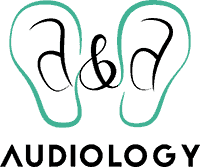- The Connection Between Hearing Loss and Dementia - July 30, 2024
- The Advantages of Rechargeable Hearing Aids - July 16, 2024
- How to Enjoy Music Festivals While Protecting Your Hearing - July 3, 2024
Our bodies were made to move, which is why so many articles and headlines trumpet the benefits of a regular exercise routine. Working out for aesthetic reasons is a thing of the past, and today’s fitness trends center around the promotion of exercise as a way to feel good rather than looking good.
Unsurprisingly, the positive results found in incorporating more movement into your life extend even deeper into our very cellular functions. Even our hearing health is improved with exercise.
Research shows exercise helps hearing health
A study of mice and activity levels revealed that NOT exercising actually damages our hearing health. In the course of the study, the mice who were allowed to exercise had a lifetime hearing loss of 5%, compared to 20% for the mice who were not allowed to exercise. Moreover, when the hearing structures of the sedentary mice were studied, they had more evidence of collapse and deterioration.
If our sense of hearing works in a parallel way to that of mice, it would mean that a regular exercise routine or some type of intentional and regular movement supports the longevity of our sense of hearing.
The importance of inner ear cells
The structures this study was referring to include the sensitive cells of the inner ear. They require healthy, oxygenated blood flow to thrive. When blood flow is limited, these cells fall victim to decay.
The health of the inner ear cells are integral to healthy hearing. We are born with a finite number because they are non-regenerative cells, which means they do not repair themselves or reproduce over our lifetime. Instead, when we lose these cells, we lose access to the full spectrum of sound.
Their primary job is to receive sound from the world and translate it into sound information that is then sent to the brain for processing. When we have less cells to work with, the brain receives less sound information and the result is that we experience hearing loss.
Blood flow to the brain is important for hearing health, too
Because one of the primary benefits of exercise is increased blood flow and a healthy cardiovascular system (which is the delivery system of oxygen and nutrients throughout the body), our brain benefits from a movement program, too. Remember, our sense of hearing happens in the brain, too.
What’s more, if you already live with hearing loss then you fall into a higher risk category for future cognitive issues like dementia and Alzheimer’s. It’s important to counteract that risk by ensuring that your cognitive health gets boosted with regular exercise.
People with hearing loss move less
Hearing loss itself can impact your relationship to exercise. A study published in the Journal of Gerontology found that people with a hearing impairment had less exercise endurance that declined at a faster rate compared to older adults without hearing loss. This is all the more reason for people with hearing loss to commit to a regular fitness habit because it might delay or reduce further hearing health deterioration.
There are reasons that people with hearing loss are less mobile. Hearing loss contributes to greater isolation and reduced confidence. It can also lead to depression, which makes it harder to accomplish any activity.
Balance and a dampened sense of spatial awareness are both issues for people with hearing loss, so that traditional exercise might feel unsafe. Hearing aids may help to alleviate some of the barriers to exercise that hearing loss brings. Research shows that hearing aids increase a person’s walking endurance.
How to workout (even with hearing loss)
The number one rule of exercise is to do what you like. Your exercise program might look more like finding small ways to incorporate movement rather than training to run a marathon. The best type of fitness you can engage in is whatever you’ll actually do. That might mean adding a few moderate walks and a few kitchen dance parties each week where you cue up your favorite songs and let loose for ten minutes. If balance is an issue, try out some of the chair yoga options available from a quick Google search.
Any type of movement helps your body retain mobility and gets your blood pumping! Contact us today!

